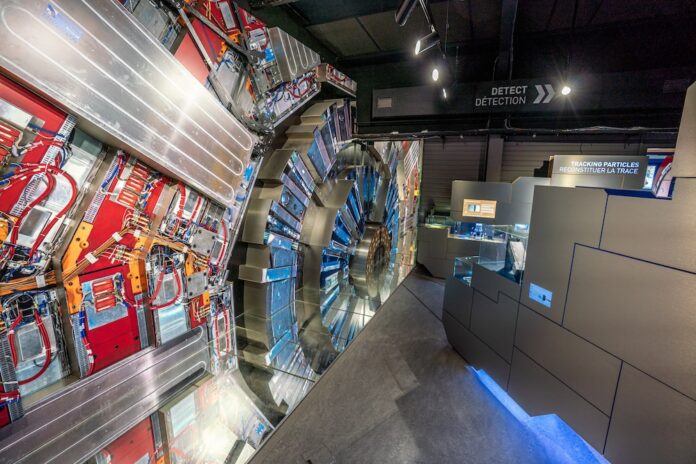Trial was conducted over 1648km existing fibre link connecting research facilities at Nikhef, CERN, and SURF
Nokia and the collaborative organisation for IT in Dutch education and research SURF have successfully reached a single carrier 800Gbps optical transmission over SURF’s existing cross border, multi-vendor research and education network infrastructure. The transmission, based on Nokia’s photonic service engine technology, will help accelerate the massive data exchange between the CERN particle accelerator – the Large Hadron Collider (LHC) – and the NL Tier-1 (NL T1) research IT facilities at SURF and Nikhef, the Dutch National Institute for Subatomic Physics.
The upgrade has become necessary because according to CERN, the four main LHC experiments have so far produced more than 1,000 petabytes of data and this data is accessed and analysed by thousands of scientists and ICT companies around the world, who are studying disciplines such as high-energy physics, radio astronomy, meteorology and biomedicine.
By reaching 800Gbps per channel on older fibre varieties, Nokia and SURF prove that existing infrastructure still has tremendous potential, and that legacy optical fibres can be used to meet future capacity demands of the huge data streams generated by international scientific research instruments.
The trial was conducted over a 1648 km point-to-point fibre link connecting Amsterdam and Geneva, crossing Belgium and France. The fibre link is part of the SURF-network, which connects national research and education institutes in the Netherlands, such as Nikhef. Additionally, the SURF-network is also well connected to other research networks and experiments worldwide, including the LHC Optical Private Network (LHCOPN). The LHCOPN provides access to data at the Large Hadron Collider (LHC) at CERN, the world’s largest and most powerful particle accelerator.
For this trial, CERN, Nikhef, SURF and the ATLAS LHC experiment have collaborated to include real production workflows that are expected when the High-Luminosity Large Hadron Collider (HL-LHC) is operational.
More data, deeper insights
SURF is preparing its network for CERN’s LHC upgrade to the HL-LHC that will become operational in 2029. The discovery of the Higgs boson by the LHC has already revolutionized the world’s understanding of the universe. Expectations are that the future HL-LHC will reveal even deeper insights into the fundamental building blocks of the cosmos.
This upgrade will not only provide more insightful research results and improve the potential for groundbreaking discoveries, but it will also produce enormous amounts of scientific data. The HL-LHC is expected to generate data at a rate of five times the speed of its predecessor. Therefore, it depends on advances in SURF’s high-performance network, as demonstrated in this trial, to enable fast and reliable data transfer to the NL T1 for further scientific exploration.
“This trial is an important milestone for us as we prepare our network for the future demands of scientific research and education, including the upgrade of CERN’s particle accelerator. By emphasizing testing and the adoption of advanced technology, SURF ensures optimal service and support for its research partners’ innovative, data-heavy projects and applications,” said SURF board member and chief innovation officer Ron Augustus.
“We are committed to helping SURF prepare its network for the upgrade of CERN’s particle accelerator, and look forward to working with other research and education networks around the world to advance their missions and enable cutting-edge discoveries,” said Nokia VP and GM optical networks James Watt.
Nikhef IT-Architect Tristan Suerink added: “The 800Gbps technology demonstrated together with SURF and Nokia, shows us that getting the data from the HL-LHC at CERN to Amsterdam will be very feasible. Nikhef is working hard to design and build the detectors that will be part of the HL-LHC and therefore it’s crucial to be able to transfer the massive amounts of data that will be generated by the experiments.”
Kit used by Nokia
Nokia’s sixth-generation super-coherent Photonic Service Engine (PSE-6s) was deployed on the Amsterdam-Geneva link, in combination with SURF’s line system with equipment from a third-party on an older fibre link. It showed that the partners were able to achieve 800Gbps transmission using 16QAM-shaped PCS modulation.
The trial needed to cross four countries – from CERN in Switzerland, through France and Belgium – to reach the data hub in Amsterdam. Never before had these large data volumes been tested over such a large physical distance using outdated fibres. The trial also needed to take into account that the line systems and transponders used by SURF came from two different suppliers.
To cope, the existing data stream was transferred to an upgraded connection where the data points were equipped with the latest Nokia transponders, high-speed network equipment and servers. New amplifiers from supplier Ribbon were also installed on the fibre to facilitate the test.



